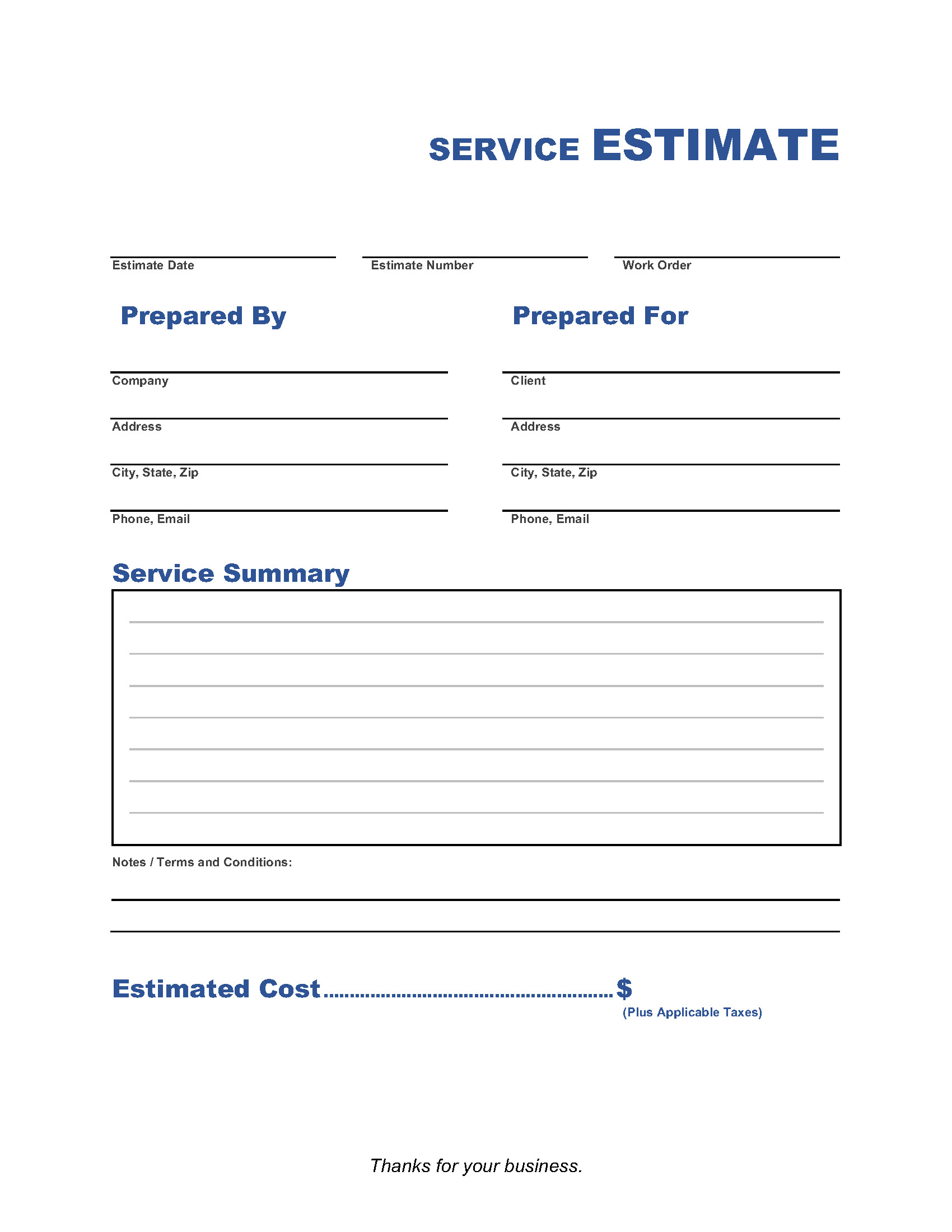Service Estimate Template
A service estimate is a document provided by a business to a client or potential client that offers an approximation of the price that will be charged for performing a service. As the name implies, service estimates are specifically concerned with providing a service, such as repair work, rather than a good, like a piece of furniture.

- When is a Service Estimate Required?
- What is Included in a Service Estimate?
- How Reliable is a Service Estimate?
When is a Service Estimate Required?
Some states have laws that require certain professions to provide estimates. For example, in California, auto mechanics are required to provide estimates for almost all repair jobs. But in most cases, there is no legal requirement for a service estimate. Instead, they are provided as an aid to customers, who often use them to compare prices for various service providers.
What are the Benefits of Providing a Service Estimate?
In some industries, service estimates are so common that a business in these fields that fails to provide an estimate could risk losing customers. Industries where service estimates are common include:
- Auto repair
- Appliance repair and maintenance
- Home improvement, like exterior painting
- Home maintenance, like tree-trimming
What is Included in a Service Estimate?
The contents of a service estimate will vary depending on the field. The following, however, are standard in almost all service estimates:
Scope of Work
The scope of work is where a company can explain exactly what service will be provided. This is important because there many industries in which businesses will call a service by the same name, but provide very different levels of work. In snow removal, for example, one firm may clean only driveways, while another may clean both driveways and walkways. Offering a clear, detailed scope of work makes it easier for customers to compare service providers, and allows them to make decisions based on factors other than just pricing. This can be especially valuable for firms that may charge more than competitors but also offer more extensive services.
Price Variability
Estimates provide an informed approximation, but even the most professional estimates cannot perfectly predict how much a service will cost. Service estimates should contain standardized language making this clear, and then additional information about variables that might shift the cost of the particular job.
Cost Components
This is the section in which a service provider details what goes into the price that is named in the estimate. The typical components are labor and parts:
- Labor: The cost of the work that employees or contractors of the firm perform in providing the service. This is typically expressed as the amount of time the work is expected to take, multiplied by the worker’s rate.
- Parts: The items that will be used in providing the service. For example, in the case of a house painting estimate, parts could include brushes, rollers, and the amount of paint required to cover the desired area of the home.
Estimates generally do not include sales tax and other taxes that may go into the final price charged in an invoice. However, permitting or compliance costs, such as the cost of specialized waste disposal associated with a job, usually have to be included.
How Reliable is a Service Estimate?
Because estimates take place before work has begun, they rely on incomplete information and will not be perfect. But providing estimates that are consistently far from the final invoiced price will ultimately deter customers.
What to do if an Estimate is Too Low or Too High
As stated earlier, service estimates should contain language indicating that the final price invoiced may vary. If a firm learns part way through a job that substantially more work will be required to complete it than was stated in the estimate, best practice is to notify the customer, to make sure that they wish to continue.